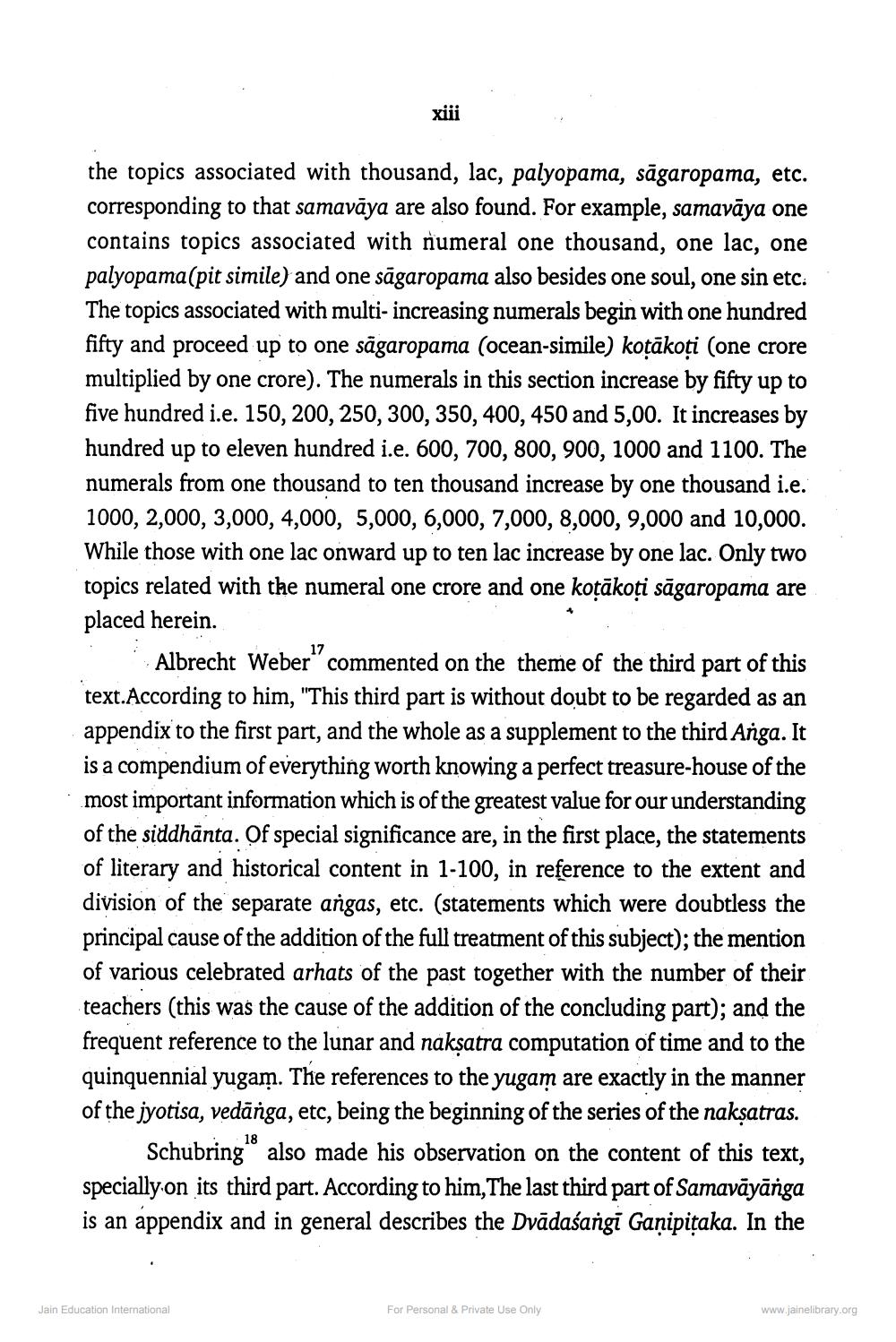________________
the topics associated with thousand, lac, palyopama, sāgaropama, etc. corresponding to that samavāya are also found. For example, samavāya one contains topics associated with numeral one thousand, one lac, one palyopama(pit simile) and one sāgaropama also besides one soul, one sin etc. The topics associated with multi- increasing numerals begin with one hundred fifty and proceed up to one sägaropama (ocean-simile) kotākoți (one crore multiplied by one crore). The numerals in this section increase by fifty up to five hundred i.e. 150, 200, 250, 300, 350, 400, 450 and 5,00. It increases by hundred up to eleven hundred i.e. 600, 700, 800, 900, 1000 and 1100. The numerals from one thousand to ten thousand increase by one thousand i.e. 1000, 2,000, 3,000, 4,000, 5,000, 6,000, 7,000, 8,000, 9,000 and 10,000. While those with one lac onward up to ten lac increase by one lac. Only two topics related with the numeral one crore and one kotākoți sāgaropama are placed herein.
Albrecht Weber" commented on the theme of the third part of this text.According to him, "This third part is without doubt to be regarded as an appendix to the first part, and the whole as a supplement to the third Anga. It is a compendium of everything worth knowing a perfect treasure-house of the most important information which is of the greatest value for our understanding of the siddhānta. Of special significance are, in the first place, the statements of literary and historical content in 1-100, in reference to the extent and division of the separate angas, etc. (statements which were doubtless the principal cause of the addition of the full treatment of this subject); the mention of various celebrated arhats of the past together with the number of their teachers (this was the cause of the addition of the concluding part); and the frequent reference to the lunar and naksatra computation of time and to the quinquennial yugam. The references to the yugam are exactly in the manner of the jyotisa, vedānga, etc, being the beginning of the series of the naksatras.
Schubring also made his observation on the content of this text, specially on its third part. According to him, The last third part of Samavāyānga is an appendix and in general describes the Dvādaśangi Ganipițaka. In the
Jain Education International
For Personal & Private Use Only
www.jainelibrary.org




